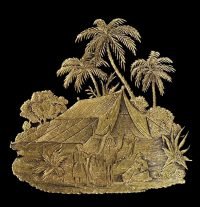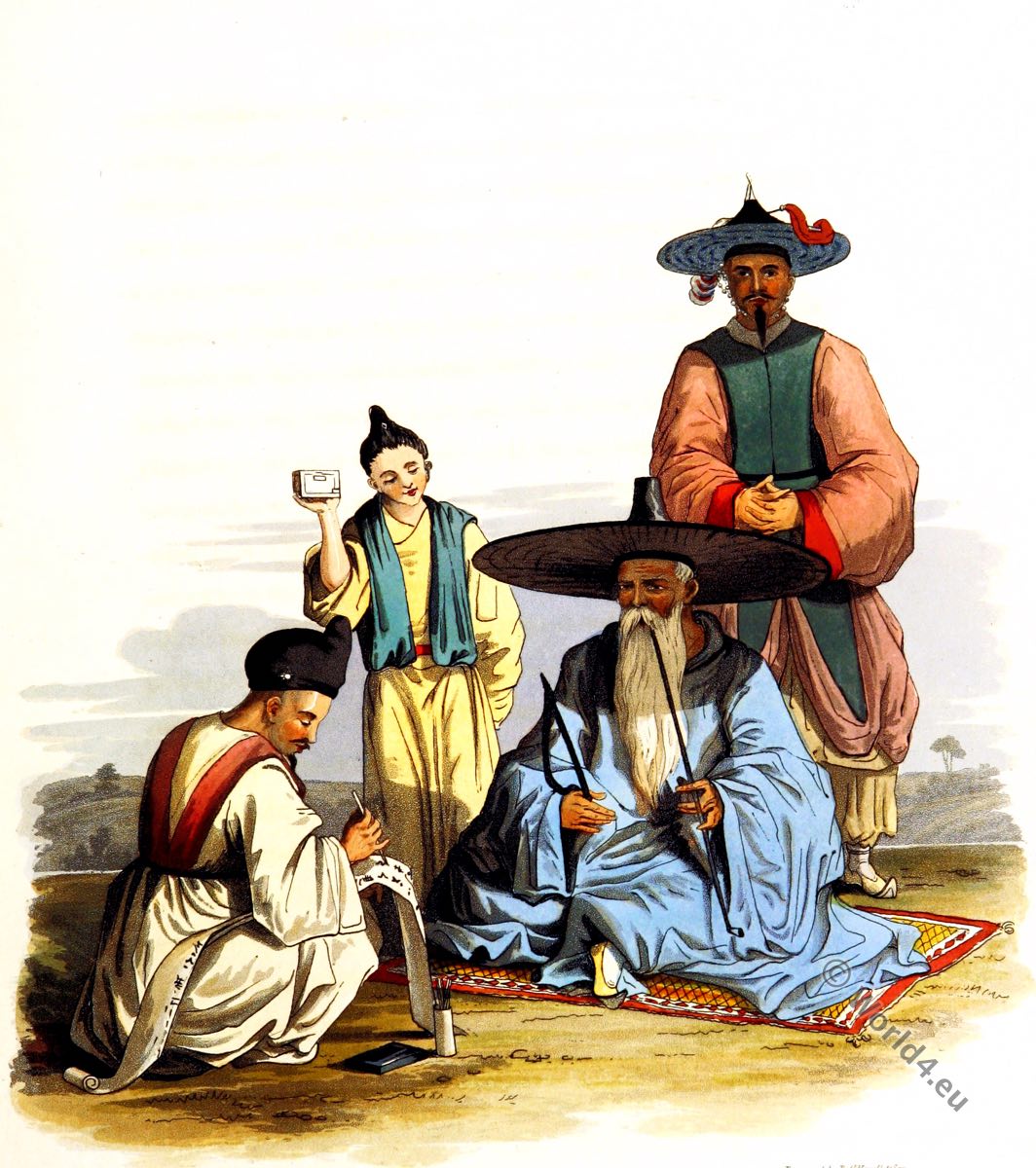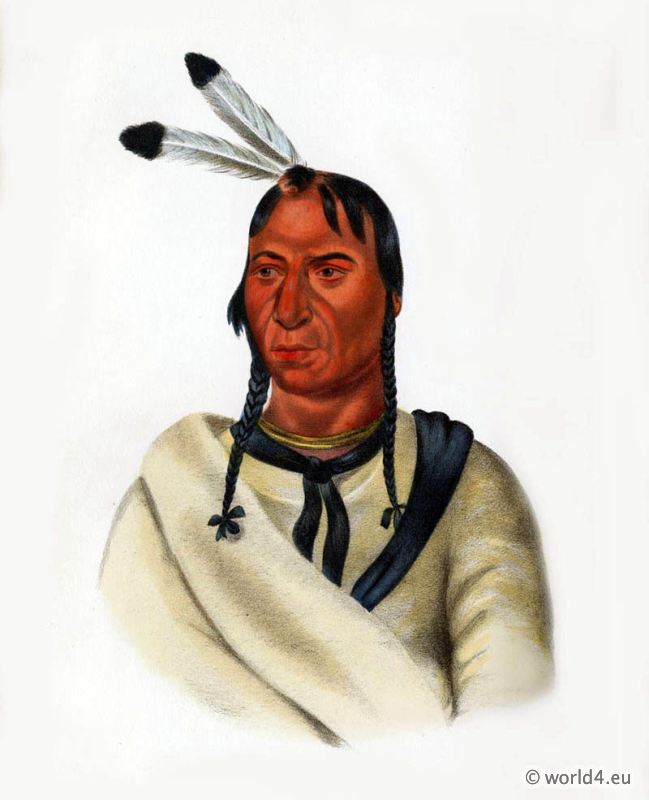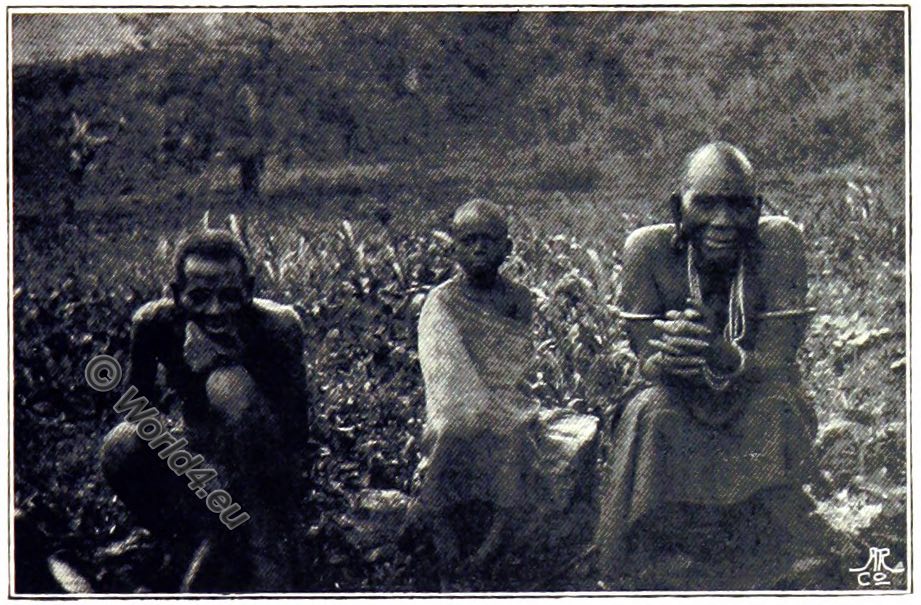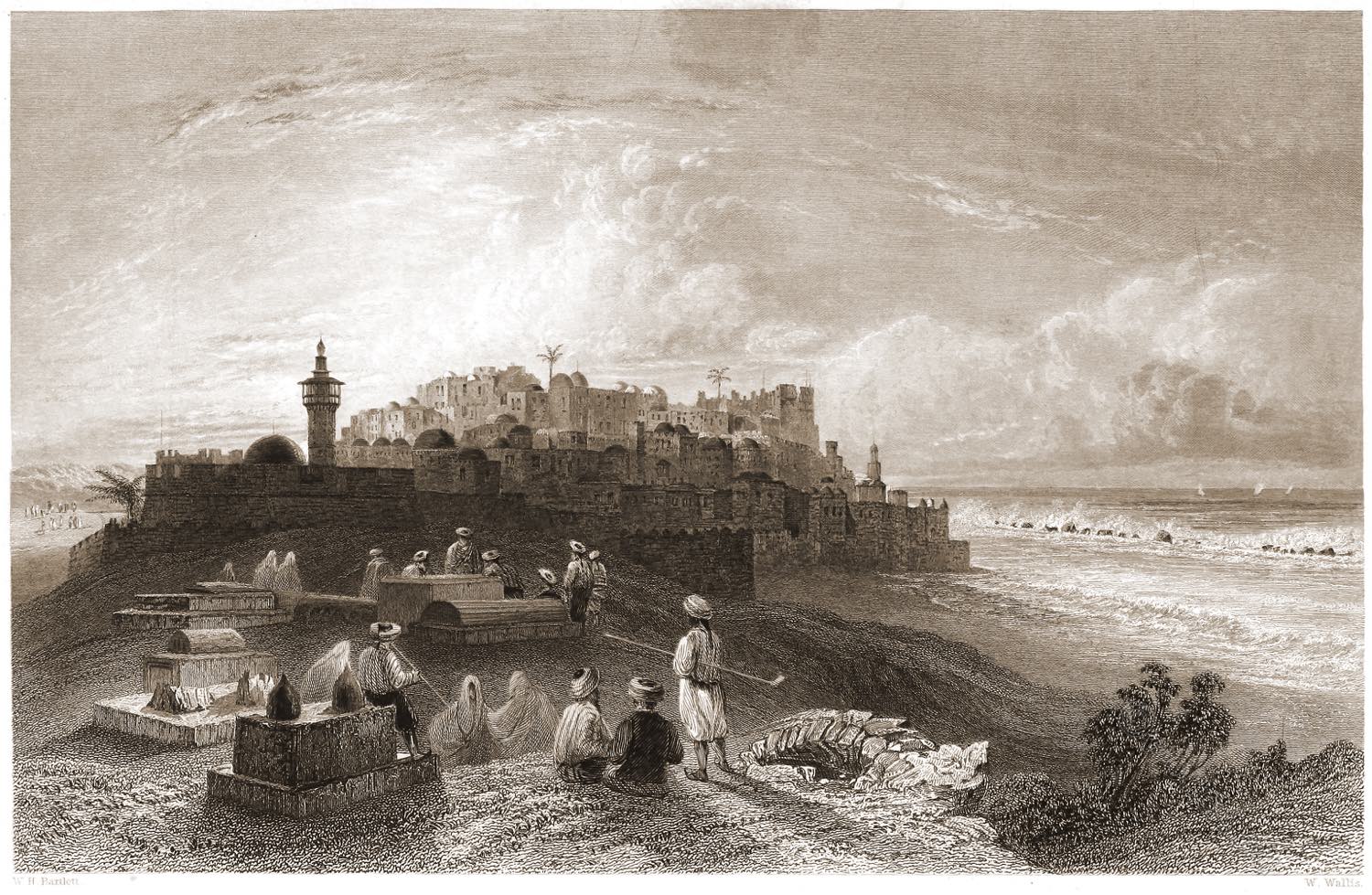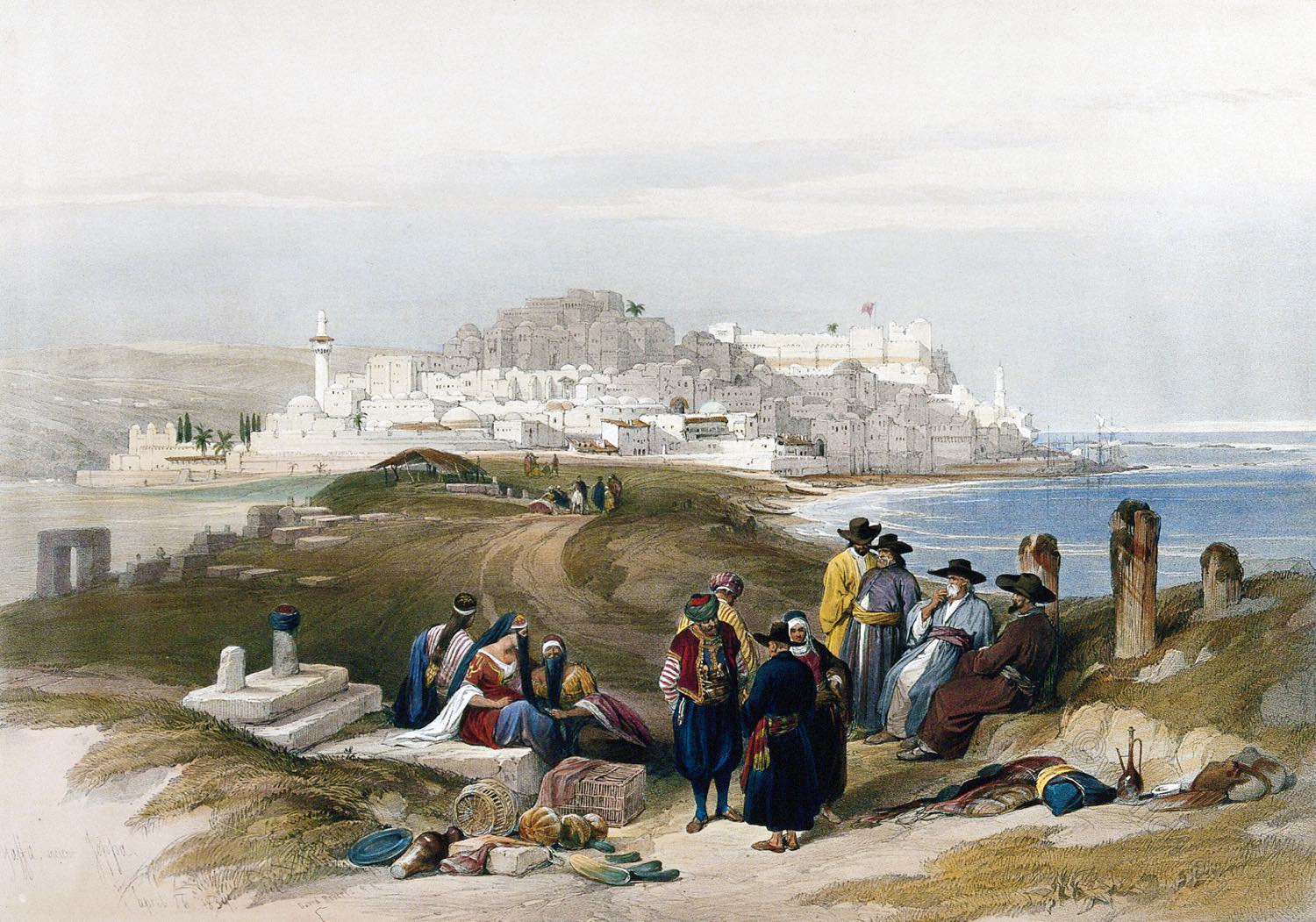
View of Jaffa.
Jaffa looking south.
Jaffa, the ancient Joppa, and now called by the Arabs Yafa, rose into early importance, as the chief harbour of Judaea. The modern town stands on a promontory rising to a height of 150 feet above the sea, and bearing to the North-west of Jerusalem, at a distance of about forty-five miles. From its commanding position, Jaffa has a striking aspect on the sea-side; and its land view is bold and extensive. On the South, it overlooks a wide and rich succession of plains spreading to Gaza; on the North, its horizon is the noble ridge of Mount Carmel; on the East, the hills of Judah exhibit every form of mountain magnificence; on the West, lies the boundless beauty of the Mediterranean. The interior, like that of all Eastern Cities, disappoints the eye. Narrow streets, loaded with mire in winter, and choked with dust in summer; a struggling population of five thousand, compressed into hovels, which seem the natural nests of disease, and where the pestilence has made many a fearful ravage ; a Greek, a Latin, and an Armenian Convent, all meanly built, and feebly maintained; constitute the town and the people. 1)
But the historical distinctions of Jaffa are of a high order. As Joppa it becomes known so early as the division of the Promised Land, where it was in the portion of the Tribe of Dan. 2) It was the port to which the cedars hewn in Lebanon were brought for the building of the first Temple. 3) From Joppa the Prophet Jonah embarked, when he was sent to preach to the Ninevites. 4) In Christian history, it had the distinction of the miracle wrought by St. Peter, in restoring Tabitha to life; 5) and here the great Apostle dwelt in the house of Simon the Tanner. 6) In the war which extinguished Judah, the town was garrisoned by a strong Jewish force; but it was finally stormed by the Roman troops, with a slaughter of twelve thousand of its unhappy defenders.
After a sleep of a thousand years, Joppa became again the subject of history. Its value, as the nearest port to the Holy City, attracted the enterprise of the Crusaders; and the most gallant achievement of Coeur de Lion was performed in defeating the Saracen army under its walls. But it paid dearly for the Christian triumphs, in the return of the enemy in irresistible force, and its storm, with the massacre of twenty thousand lives. The ruined walls were rebuilt by Louis IX. of France (a.d. 1250); but in the general exhaustion of the Crusades it sank into decay once more, and was lost to European recollection.
The long interval of five hundred years elapsed, when its name was revived in the Egyptian invasion of Napoleon. The brilliant but reckless ambition of that pre-eminent soldier conceived the idea of overthrowing the West by the weight of the East; and the conquest of Syria was to be the first step to the universal throne. Advancing (a.d. 1799) with a force that swept all resistance before it, he captured the Turkish posts in rapid succession, and made himself master of Jaffa after a slight combat. But there his success terminated. Our space does not allow of the further details of this most romantic enterprise. The execution of the garrison of Jaffa is a matter of painful historic record. Ill-fortune fell upon the invasion, and the proverbial skill of the leader and gallantry of the troops were baffled before the crumbling fortifications of Acre.
In after days, Napoleon, at St. Helena, was accustomed to regard the Syrian campaign as a crisis in his fortunes,— as the counteraction of a great design of conquest, — as the casualty which compelled him to remodel his plan of empire, “That campaign,” said he, “cut asunder the chain which I would have twined round the East—it broke my spell—it forced me to turn my face to Europe.”
The figures in the foreground are Polish Jews returning from their pilgrimage to Jerusalem, and waiting for embarkation.
1) Roberts’s Journal. Richardson’s Travels, ii. 208. Clarke, iv. 441, &c. 2) Josh. six. 46. 3) 2 Chron. ii. 16. 4) Jonah, i. 5) Acts, ix. 36, &c. 6) Acts, x. 6.
Source: The Holy Land, Syria, Idumea, Arabia, Egypt, & Nubia, by David Roberts, George Croly, William Brockedon. London: Lithographed, printed and published by Day & Son, lithographers to the Queen. Cate Street, Lincoln’s Inn Fields, 1855.
Continuing
Discover more from World4 Costume Culture History
Subscribe to get the latest posts sent to your email.

